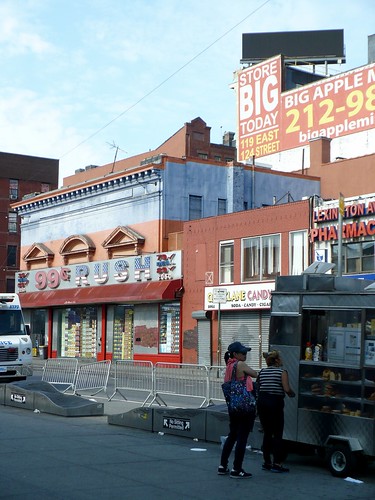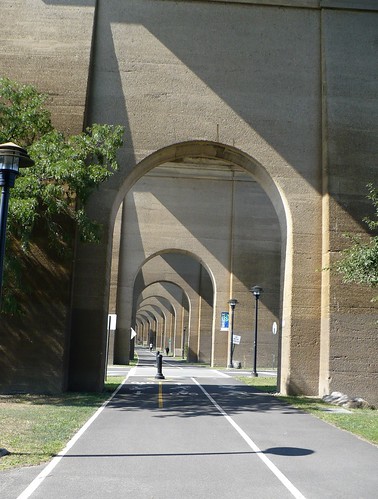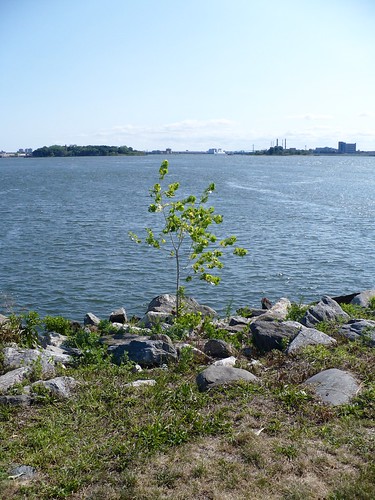The hike was organized by Shorewalkers, a group I've walked with before, in and around NYC.
So here's the starting point, near the 6-train stop at 125th Street and Lexington Avenue.

We headed east and crossed the Triborough Bridge to Randall's Island, where part of our walk took us under the Hell Gate Bridge and Railroad Viaduct.

We were near some athletic fields, and the air off the water smelled clean and fresh, even though there's a waste treatment plant nearby (the winds were blowing favorably).
Randall's Island is located between Manhattan and Queens, with the Bronx to the north. Rikers Island, with its massive prison complex, is also in view, along with the smaller North and South Brother Islands.
North Brother Island was where officials twice confined Mary Mallon, nicknamed "Typhoid Mary." It's also where the steamboat, General Slocum, ultimately came to rest after catching fire, in a hideous maritime disaster that killed over 1,000 people.
As for that rail viaduct we walked under earlier, with the beautiful concrete arches? The original plan had been to use exposed steel for the bridge's piers (or supports), but there were concerns that mental asylum inmates on Randall's and Wards Islands would easily climb on those to escape. Reinforced concrete was the solution.
All of these darker bits of history we absorbed on a calm, sunny day with beautiful views of the East River.
